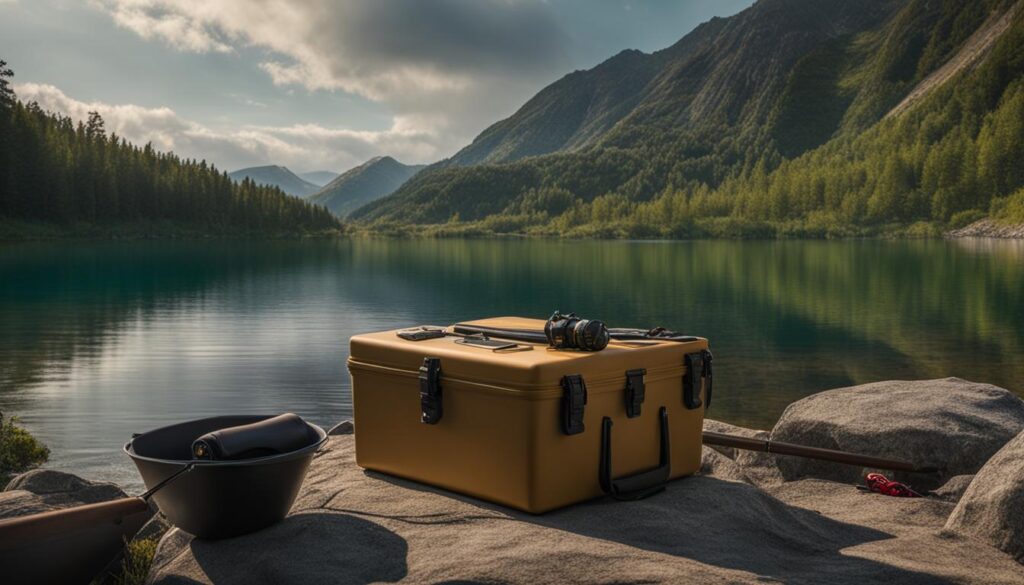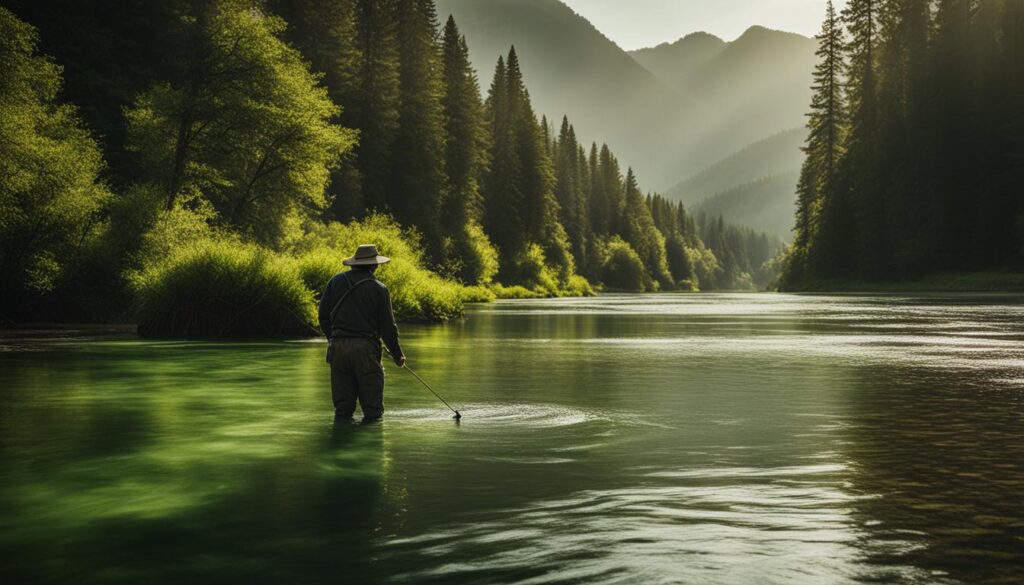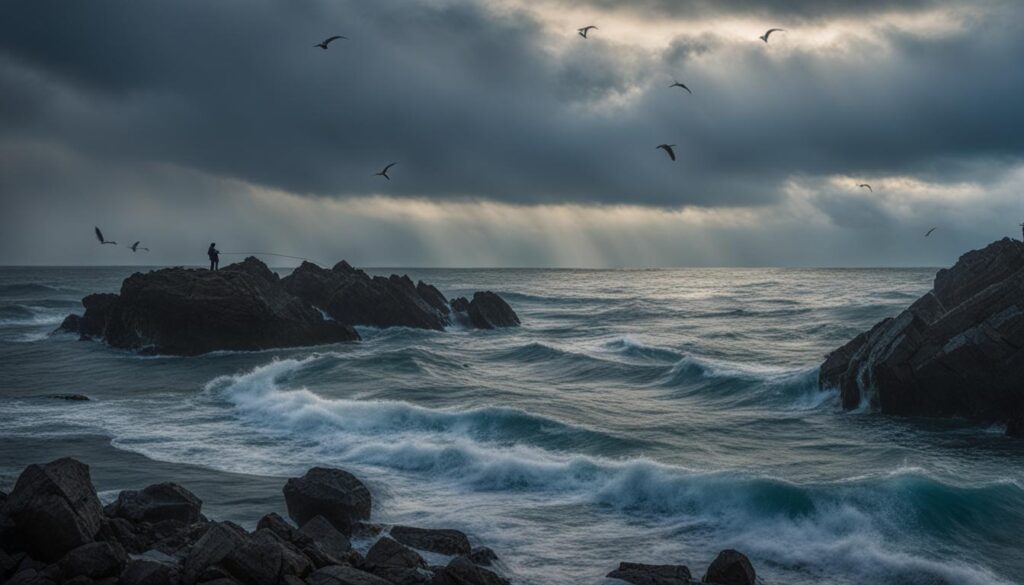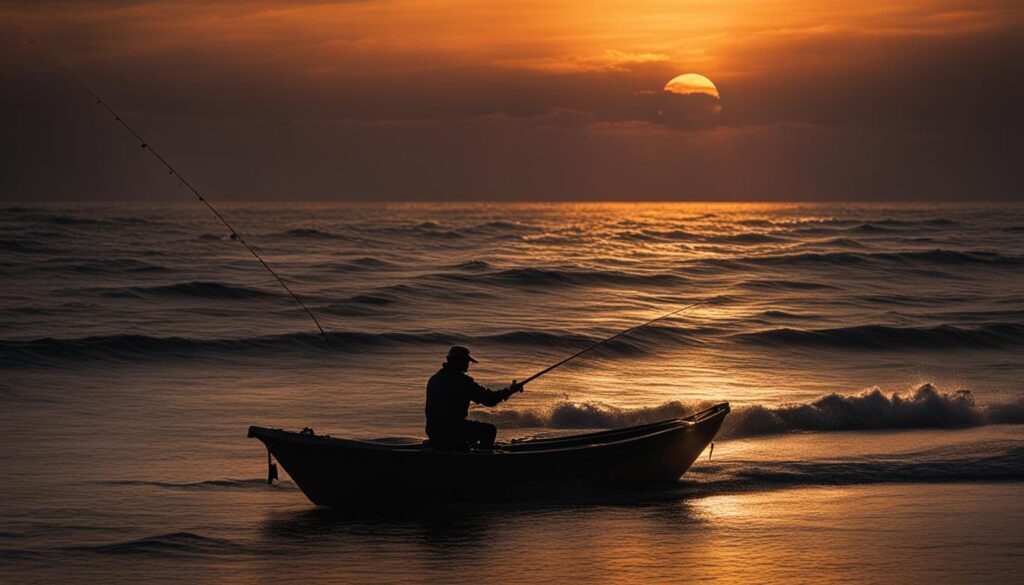We may earn money or products from the companies mentioned in this post.
Whether you’re a seasoned angler or a beginner looking to cast your line, understanding fishing license requirements is crucial. Fishing licenses are necessary to manage and conserve fish populations, enforce fishing regulations, and fund various conservation programs. By obtaining a fishing license, you play a role in preserving natural resources and ensuring sustainable fishing practices.
Each state has its own set of rules, fees, and regulations surrounding fishing licenses. It’s important to do your research and obtain the appropriate license before your next fishing trip. In this guide, we’ll provide an overview of fishing license requirements in the United States.
Key Takeaways
- Fishing licenses are required in the United States to manage and conserve fish populations and enforce fishing regulations.
- Each state has its own fishing license rules, fees, and regulations.
- Fishing licenses contribute to the preservation of natural resources and sustainable fishing practices.
Why Do I Need a Fishing License?
If you’re planning to go fishing in the United States, you will need to obtain a valid fishing license. Fishing licenses are required by state and federal agencies to manage and conserve fish populations and enforce fishing regulations. By purchasing a fishing license, you are contributing to the conservation efforts and sustainable fishing practices.
Fishing regulations can vary by state and location, so it’s essential to research and understand the rules before you cast your line. Fishing permits may also be required for certain types of fishing, such as saltwater fishing or fishing for specific species.
The Benefits of Obtaining a Fishing License
By obtaining a fishing license, you are helping to fund various conservation programs that protect and maintain healthy fish populations. These funds can go toward initiatives such as fish habitat improvement, fish stocking programs, and fishery research. Your contribution also helps to enforce fishing regulations and ensure that everyone is complying with the laws.
Fishing licenses also give you the legal right to fish in certain areas and can protect you from potential fines or penalties for fishing without a license. Additionally, having a fishing license can provide access to special fishing areas or events that may not be available to non-license holders.
Fishing Regulations and Restrictions
Fishing regulations can vary widely and can include rules on catch-and-release policies, size limits, and bag limits, which refer to the maximum number of fish you are allowed to keep. These rules are in place to maintain sustainable fishing practices and preserve fish populations for future generations.
Fishing permits may be required for saltwater fishing or for fishing for certain species such as trout, salmon, or steelhead. These permits can have specific regulations and restrictions that must be followed.
Complying with Fishing Regulations
It’s essential to research and understand the fishing regulations for the location where you plan to fish. This can include checking for any specific rules or restrictions, understanding bag limits and size limits, and complying with catch-and-release policies if required.
Remember that fishing regulations are in place to protect the fish populations and maintain sustainable fishing practices. Violating these regulations can result in fines or penalties, so it’s crucial to adhere to the rules.
Did You Know? According to the American Sportfishing Association, fishing license sales generate approximately $700 million annually, which is used to fund conservation efforts and improve recreational fishing opportunities.
Fishing License Types and Categories
Before you can cast your line in the United States, you need to obtain a fishing license. There are several types of fishing licenses available, and the requirements vary depending on factors such as age, residency, and the type of fishing you plan to engage in.
Resident and Non-Resident Licenses
If you are a resident of the state you plan to fish in, you will need to obtain a resident fishing license. Non-residents, on the other hand, will need to obtain a non-resident fishing license. Additionally, some states offer short-term licenses for individuals who are only visiting for a few days or weeks.
Saltwater Licenses
In addition to a freshwater fishing license, some states also require a separate saltwater fishing license. This license allows individuals to fish in the ocean or other saltwater bodies. It’s important to check the regulations in your state to determine if a saltwater license is required.
Special Fishing Permits
Special fishing permits may be required for activities such as commercial fishing, fishing tournaments, or fishing in certain restricted areas. These permits often have additional fees and require additional documentation, such as proof of insurance or boat registration. Make sure to check the regulations in your state to determine if any special permits are required.
Fishing Restrictions and Laws
It’s important to note that fishing restrictions and laws may vary depending on the type of license you have. For example, some licenses may have catch-and-release requirements or restrictions on the type of bait or lures that can be used. Additionally, certain fish species may have size or catch limits. It’s important to familiarize yourself with the regulations to avoid any potential penalties.
Understanding Fishing License Fees
Fishing license fees vary from state to state, depending on factors like age and duration of the license. Understanding the fee structure is essential for planning your fishing adventure and ensuring you obtain the best value for your money.
Fishing License Cost by State
Each state in the U.S. sets its own fishing license fees and regulations.
| State | Resident Fishing License Cost | Non-Resident Fishing License Cost |
|---|---|---|
| California | $52.66 annually | $142.05 annually |
| Florida | $17 annually for freshwater, $47 annually for saltwater, $79 for both | $47 for three days, $50 annually for freshwater, $225 annually for saltwater, $301 annually for both |
| Texas | $30 annually | $58 annually |
These costs are subject to change, and it’s best to check with your state’s fishing and wildlife agency for current fee information.
Additional Fees and Tips to Save Money
In addition to the base fishing license fees, some states may require additional permits or stamps, such as a trout stamp or a conservation stamp.
Here are some tips to save money when obtaining a fishing license:
- Consider purchasing a license that covers multiple years instead of an annual license.
- Look for discounts that may be available for seniors, military members, or disabled individuals.
- Check if your state offers free fishing days, where you can fish without a license on specific dates throughout the year.
By understanding fishing license fees and associated costs, you can plan your fishing trip accordingly and ensure you have the necessary permits and stamps to comply with fishing regulations. Happy fishing!
Fishing Seasons and Bag Limits
Understanding fishing seasons and bag limits is an essential aspect of responsible fishing. Fishing seasons are periods during which certain species of fish are protected during their reproductive cycles and cannot be harvested. Bag limits refer to the maximum number of fish allowed to be caught and kept per day. These regulations are put in place to ensure sustainable fishing practices and maintain healthy fish populations.
Fishing Seasons
Each state has its own fishing seasons, and they can vary depending on the species and location. For example, in California, the fishing season for bass starts on the last Saturday in April and runs until the last Sunday in November, while the season for trout varies by location. It’s important to research the specific fishing season regulations in your area before planning a fishing trip.
Bag Limits
Bag limits also vary by state and species. For example, in Florida, the bag limit for red drum is one fish per person per day, while in Idaho, the limit for trout is six fish per day. It’s crucial to follow bag limits to help maintain fish populations and preserve the environment. Exceeding the bag limit can lead to fines and penalties.
| State | Species | Bag Limit |
|---|---|---|
| Florida | Red Drum | 1 fish per person per day |
| Idaho | Trout | 6 fish per day |
| Michigan | Walleye | 5 fish per person per day |
It’s essential to stay informed about any changes or updates to fishing regulations, including fishing seasons and bag limits. Check with local authorities or visit the state’s wildlife and fisheries website to ensure you’re up to date on any restrictions or changes. Remember, responsible fishing practices not only protect the environment but also ensure future generations can enjoy the sport we love.
Location-Specific Fishing Regulations
When it comes to fishing, different locations may have their own specific regulations and restrictions that you need to be aware of. Understanding these guidelines is crucial to avoid any potential penalties and to help preserve fish populations in these areas.
To start, it’s important to research the fishing regulations of your desired location before setting out on your trip. Some areas may have catch size limits, closed areas, or catch-and-release requirements that you need to follow.
For example, if you’re planning to fish in a national park, you’ll need to follow their specific guidelines. The National Parks Service may have restrictions on where, when, and how you can fish in order to protect the park’s natural resources.
Similarly, fishing in marine protected areas may require a special permit or have specific regulations in place. These areas are designated to protect and conserve marine ecosystems and fish populations.
In some cases, fishing in certain areas may be entirely prohibited. For example, some states may have closed areas where fishing is not allowed to protect critical habitats or endangered species.
Fishing Location Regulations Table
| Location | Specific Regulations |
|---|---|
| National Parks | Fishing may only be allowed in certain areas or during specific times. Catch-and-release may be required. |
| Marine Protected Areas | Special permits may be required, and catch-and-release may be mandatory. Specific gear restrictions may also be in place. |
| Closed Areas | Fishing is prohibited in designated areas to protect habitats and endangered species. |
Always do your research before heading out to a fishing location. Make sure you understand the regulations and restrictions in place to help conserve our natural resources.
By staying informed and following location-specific fishing regulations, you can help contribute to sustainable fishing practices and ensure that these resources are protected for generations to come.
Exceptions and Exemptions
While fishing regulations require most individuals to obtain a fishing license before engaging in recreational fishing, certain exceptions and exemptions may apply.
For example, some states offer free fishing days, during which a fishing license may not be required. Disabled individuals may also be exempt from fishing license requirements, provided they carry appropriate documentation.
Special fishing events and programs may also have their own permits, which can sometimes serve as an exemption from standard fishing license requirements. These exemptions are typically granted to encourage participation in fishing and conservation efforts.
It is important to research and understand any exemptions that may apply to those planning a fishing trip. It is also crucial to note that even with an exemption, all other fishing regulations and restrictions must be followed, including bag limits and size restrictions.
Note: Exemptions and exceptions vary depending on the state and specific fishing location. Always check with the state or local fishing regulations and permits office for more information.
Conclusion
As we conclude this essential guide to fishing license requirements in the U.S., it’s evident that fishing licenses are a crucial aspect of recreational fishing. Understanding the rules, fees, and regulations that come with obtaining a fishing license is key to ensuring a hassle-free fishing trip and contributing to the conservation and management of fish populations.
Always Obtain the Appropriate Fishing License
Before your next angling adventure, be sure to obtain the appropriate fishing license that suits your needs based on your residency, age, and the type of fishing you plan to engage in. Additionally, understanding the fee structure will help you budget for your fishing trip accordingly. Remember, fishing without a license is illegal and can result in hefty fines and penalties.
Stay Informed and Compliant with Fishing Regulations
It’s crucial to stay informed and comply with the fishing regulations in your location of choice. Fishing regulations may change from time to time, and it’s important to research and keep up-to-date with any updates or restrictions. By observing fishing seasons and bag limits, you can help ensure sustainable fishing practices for future generations.
Exceptions and Exemptions
While fishing licenses are generally required, certain exceptions and exemptions exist. These may include specific age groups, disabled individuals, and certain fishing events or programs. If you believe you may qualify for an exemption, research and navigate the process accordingly.
In conclusion, by obtaining the appropriate fishing license, understanding fishing regulations, and complying with them, you can enjoy a worry-free fishing adventure while contributing to the conservation and management of fish populations. Remember always to obtain the appropriate fishing license: it’s the law.
FAQ
Why do I need a fishing license?
Fishing licenses are typically required by state and federal agencies to manage and conserve fish populations, enforce fishing regulations, and fund various conservation programs. By obtaining a fishing license, you play a role in preserving the natural resources and ensuring sustainable fishing practices.
What are the different types of fishing licenses?
Fishing licenses come in various types and categories, including resident and non-resident licenses, saltwater licenses, and special fishing permits. The type of license you need may depend on factors such as your age, residency, and the type of fishing you plan to engage in.
How much do fishing licenses cost?
Fishing license fees vary from state to state and can also depend on factors like age and duration of the license. It is best to check with your state’s fishing department or agency for specific fee information.
What are fishing seasons and bag limits?
Fishing seasons are periods of time when certain fish species are protected during their reproductive cycles. Bag limits refer to the maximum number of fish you are allowed to keep. Both fishing seasons and bag limits are put in place to maintain sustainable fishing practices and conserve fish populations.
Are there location-specific fishing regulations?
Yes, different fishing locations may have specific regulations and restrictions, such as catch size limits, closed areas, and catch-and-release requirements. It is important to research and understand the fishing regulations for your desired fishing spots to comply with the rules and avoid penalties.
Are there any exceptions or exemptions to fishing license requirements?
While fishing licenses are generally required for individuals engaging in recreational fishing, some exceptions and exemptions exist. These may include certain age groups, disabled individuals, and specific fishing events or programs. It is recommended to check with your state’s fishing department or agency for information on any exemptions that may apply to you.
Affiliate Disclosure: This post may contain affiliate links. If you purchase through our link, we may receive a small commission, but at no additional cost to you. For more information, please see our Disclosure statement.



